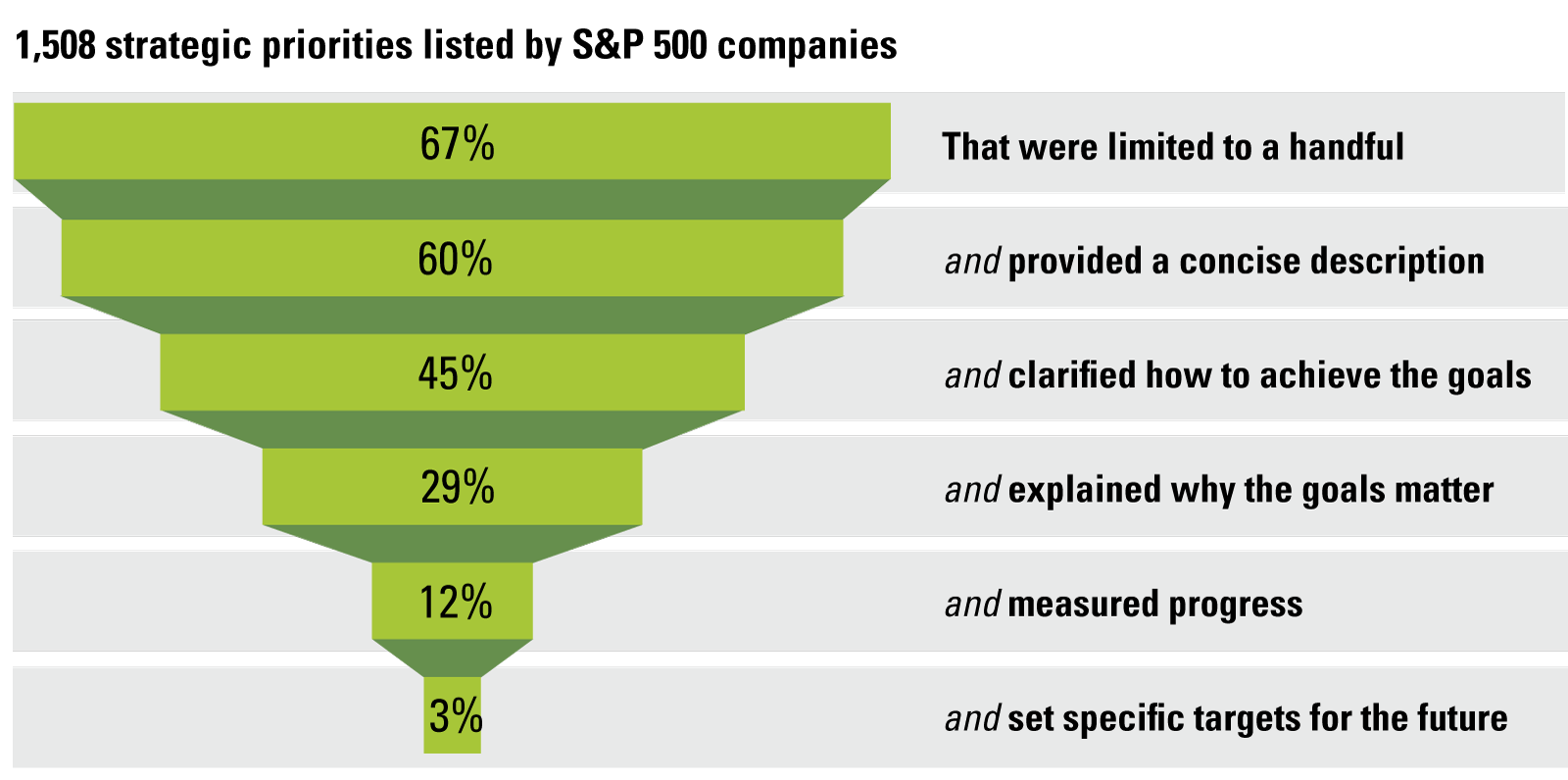Tis the season…
To be finalizing your company’s goals for the next 1-3 years, that is.
With 2024 careening toward its conclusion, hopefully the company is ready to move from the strategic planning phase, or the what, into implementation, or the how.
Without getting into too much detail, this is the point where the company will determine the levers it will pull (i.e., objectives) for achieving a specific goal. Hopefully, success metrics were developed in tandem with the goal(s) to help decision-makers know whether their efforts are paying off or not. What will the metric(s) need to reflect at the end of year three or the end of year one?
Once it’s known what is achievable in year one, the company should then be able to develop the initiatives it will execute to reach this milestone.
This may sound simple, but it is not easy.
In fact, according to research we cite in an article exploring this at a high level, up to 75% of large organizations find implementing strategic initiatives to achieve goals to be a real struggle. A quote from Steve Jobs we included in that article bears repeating…
“To me, ideas are worth nothing unless executed. They are just a multiplier. Execution is worth millions.”
Next in this implementation phase is what many would consider to be the hard part, but not me. Once the initiatives for pursuing the goal(s) are known, they need to be communicated but before any work commences.
Unfortunately, this step is a huge challenge for many companies, so much so that as many as 90% of senior executives “admit that they don’t achieve all of their strategic goals, citing poor implementation and lack of effective communication as the number one cause” according to research from Korn Ferry [emphasis added].
That being the case, below are five reasons why communicating strategic priorities should be a top priority while implementing strategic goals.
Reason #1 – Communicating strategic priorities gets people excited and makes them feel involved in the company.
There are several angles on how we can look at this.
The first is that while there was limited involvement in the creation of strategic plans, followed by requisite objectives and initiatives, this will be the first time these plans are revealed to the company at large.
Think of this broad communication as a pep rally of sorts. Flashing back to high school, when I was part of the drumline in marching band, a pep rally would help build excitement for a classic football home game matchup.
Much of the same thing is happening here…effectively communicating strategic plans gets managers and employees excited and engaged for the year ahead. This connection is something more and more employees crave.
Second to this, communicating strategic priorities also builds trust. According to a survey by OnePoll commissioned by Forbes Advisor, poor communication reduces trust in leadership among 43% of on-site workers and 54% of remote workers.
Reason #2 – Communicating strategic priorities lets everyone know what is NOT a priority.
It’s important to know what leadership’s priorities are for the year(s) ahead, but what’s equally essential is knowing what is NOT important.
Everyone will have their own ideas of what the company should be doing – their own pet projects, if you will. Often though, these pet projects do not support the company’s priorities. What may be important to a manager or individual employee may in fact be harmful to the company because of disastrous downstream consequences.
Reason #3 – Communicating strategic priorities helps ensure supporting functions are prepared.
“It takes teamwork to make the dream work,” they say.
No single function or department in the company is able to achieve strategic goals all on their own. Support functions are needed to enable other areas to perform both their day-to-day jobs and pursue goals with speed and efficiency.
Communicating strategic priorities helps corporate support functions like Accounting, HR, and IT set their plans for how they will help the company achieve its goals. It will also help these support functions identify any gaps in processes that will be exacerbated by the priorities.
Take Accounting, for example…
Perhaps the company wants to allow the customer to pay online for a service, but the current systems do not allow for online payments and cannot be connected with the banking system. This means upgraded technology will be needed, and a change in processes will be needed to facilitate that goal. But Accounting wasn’t aware of this dependency until the priority was announced to the company. Uh-oh.
To learn more, visit Ignoring Implementers of Strategic Decisions – Why It’s Risky and How to Fix It.
Reason #4 – Communicating strategic priorities builds credibility with external stakeholders.
Up until now, all these reasons have been internal to the company, but what about those on the outside? What value is there in communicating strategic priorities to external parties?
According to research by Donald Sull and his team at MIT’s Sloan School of Management, over 70% of companies listed on the S&P 500 reported their strategic priorities on their strategic annual reports and Form 10-Ks.
While it may seem counterintuitive to reveal these priorities to the world, Sull maintains that doing so can attract potential investors, talent, and even external partners. Linking priorities with specific metrics gives interested third parties a benchmark for judging the company’s progress, thus providing further assurance.
Besides Sull’s points, I would also add that communicating strategic priorities helps vendors prepare for how they’ll help the company achieve its goals similar to internal departments mentioned in number three.
Reason #5 – Frequent and consistent communication ensures effectiveness to the listener.
There are all sorts of ways to communicate strategic priorities, including town halls, emails, and more. Considering that everyone learns differently, it is important that the leadership communicate the priorities frequently and consistently in various mediums, such as email, videos, and signage.
Some characteristics of effective communication, according to Sull and his team, include:
- Limit strategic priorities to a handful.
- Provide a concise explanation of what a priority means.
- Clarify how a priority will be accomplished.
- Explain why a priority matters.
- Measure progress toward achieving the priority.
- Set specific targets for the future.
However, as the graphic below indicates, hitting all six of these is a real challenge for all but a very limited number of companies.
We all spend so much time wrestling with the question of the company’s big picture goals and formal plans for the future.
And while the strategic planning process is important, implementing and communicating strategic priorities is invaluable in its own right as we demonstrate here.
How does your company communicate the what and how of its strategic priorities?
Are there any other benefits you would add to this list?
We invite you to share your thoughts – join the conversation on LinkedIn.
If your company is struggling to communicate its strategic priorities effectively or even figure out its priorities, reach out today to discusses your company’s challenges and potential ways forward.
Image courtesy of MIT Sloan School of Management








